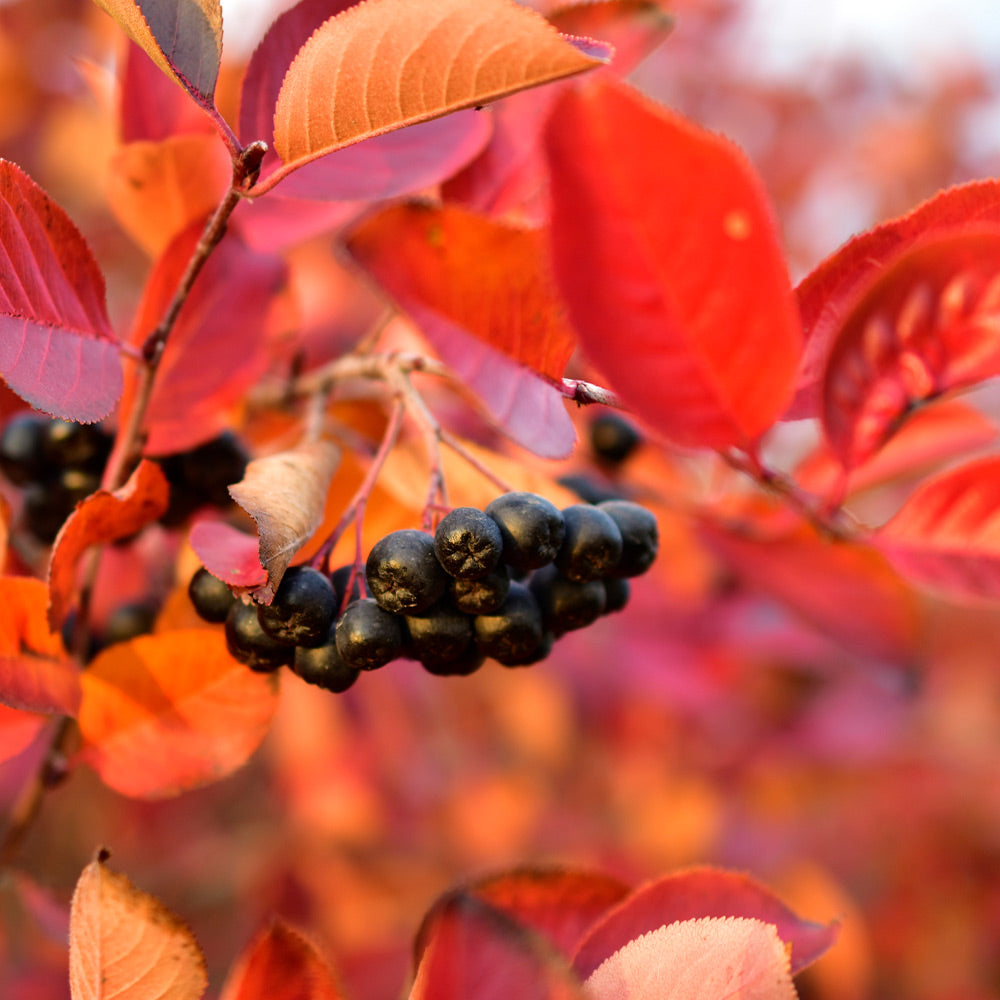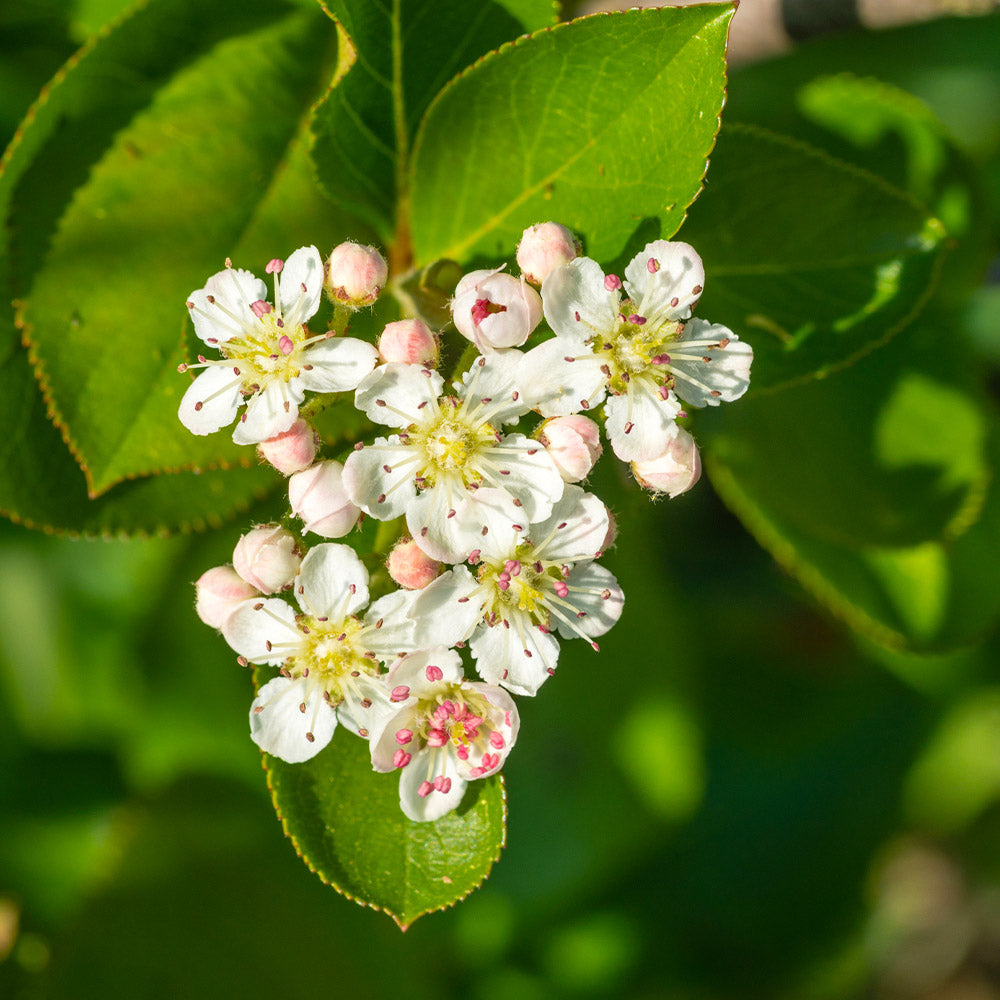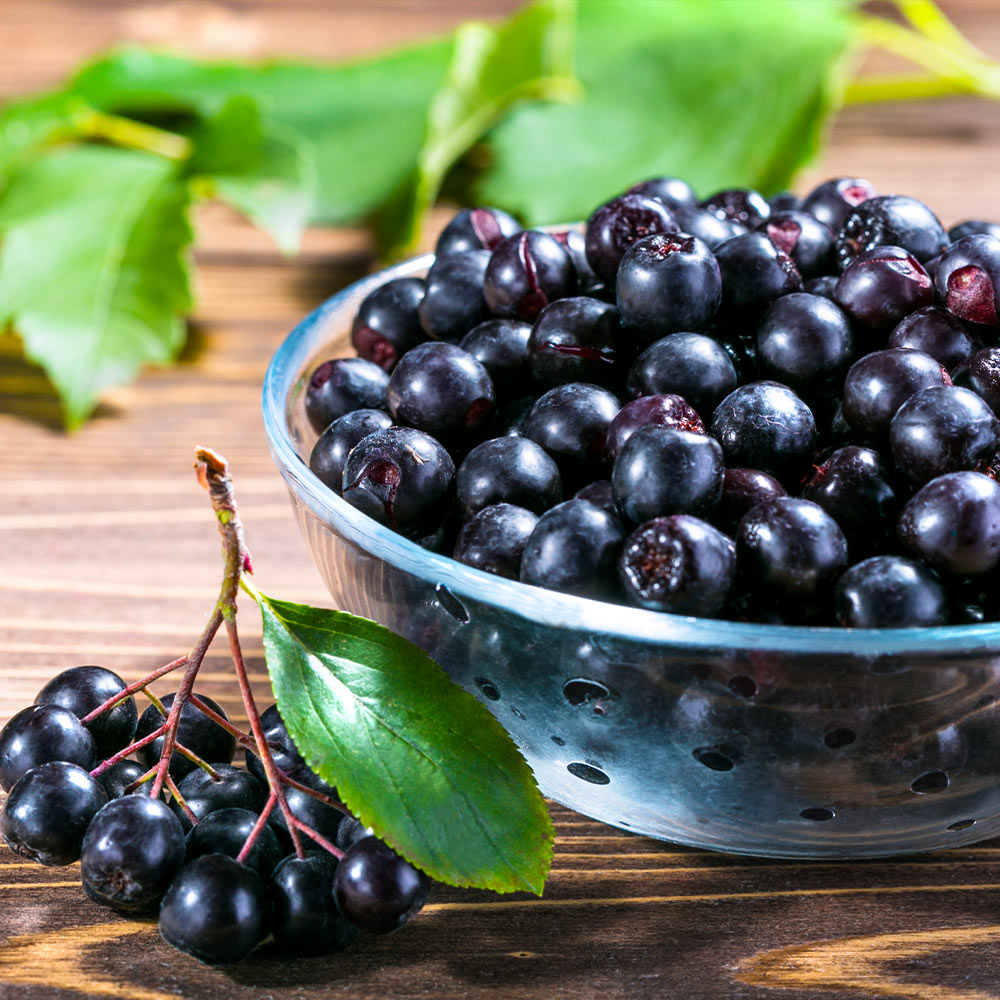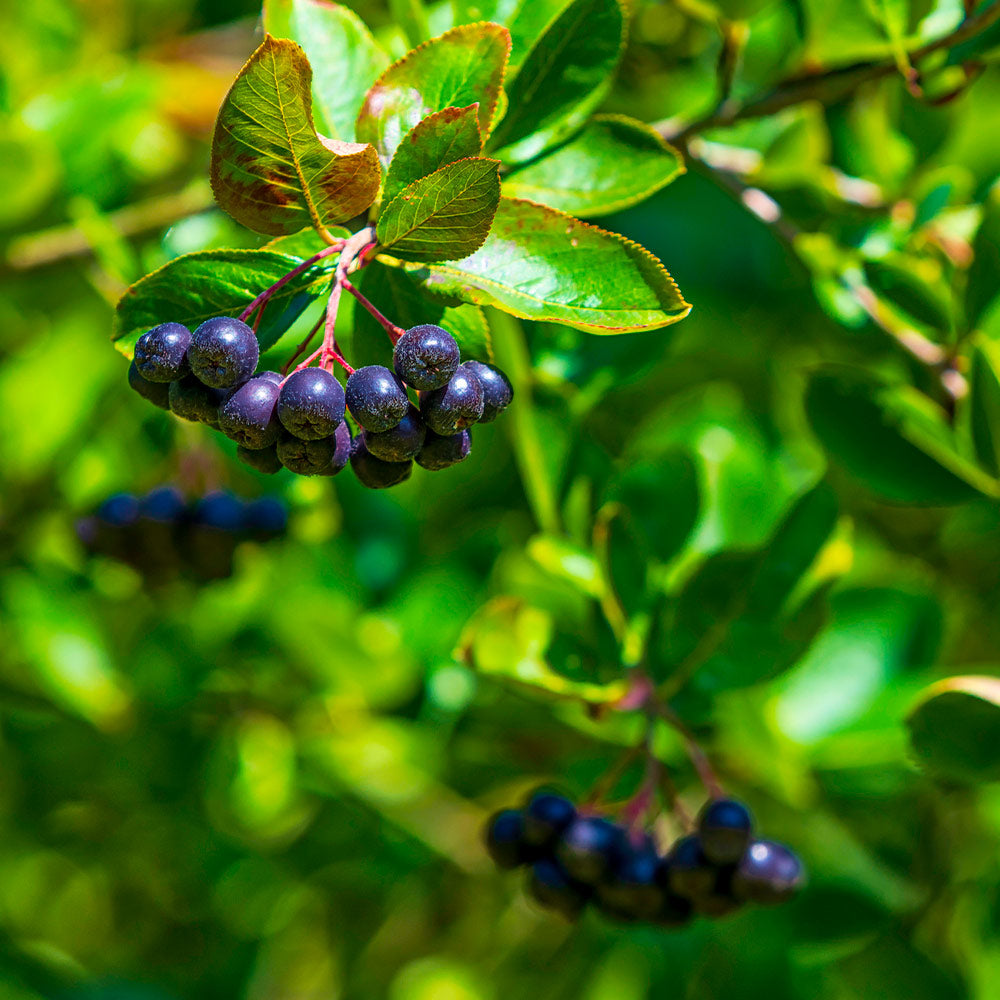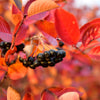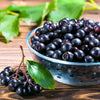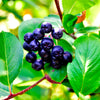* Images shown are of mature plants

Have questions? Talk with our Plant Experts (800) 973-8959
Save 25% on $200+ with code FALL25.
Questions? Call our plant experts: (800) 973-8959
Delicious Sour Berries Filled With Health Benefits
The Viking Aronia Berry, also known as Chokeberry, is a unique, tart berry with black glossy skin that’s famous for its flavor-packed punch when used in recipes for muffins, jams, wines, desserts and more.
They have a distinct flavor that will make you pucker with nodes of sweeter berries like blueberries and cranberries when eaten fresh. Their sour taste is perfect for combining with sweeter foods, like ice cream and cakes, because they give recipes the mouthwatering zing that they’ve been missing.
A Fun Snack that tastes like sour candy, but is 100% healthy. Add a handful to salads or oatmeal and give your immune system a boost. These berries are filled with vitamins and minerals.
They are a great source of vitamin C, E, and A, and also have high levels of potassium, iron, and manganese. The antioxidants in Viking Aronia Berries help to protect the eyes and skin, and the fiber content promotes colon health.
These are tough shrubs that don't require a lot of attention. With a high level of pest and disease resistance, nothing stops these robust shrubs from pumping out tons of berries.
Grow your own at home for an endless supply of delicious berries as well as compact ornate shrubs. Every spring large clusters of white flowers emerge all over Chokeberry shrubs to fill the landscape with stunning color.
In the fall, its lush green foliage turns shades of orange with a purple tinge, and the ripening berries pop against the bright fall hues for a striking display of autumn colors.
With these shrubs, you’ll have the most stunning landscape in the neighborhood, as well as the best tasting homemade preserves and desserts.
Limited supply. Be sure to order yours before we run out!
Pollination Info
Viking Aronia Chokeberry Bush Pollination
Viking Aronia Chokeberry Bushs are self-fertile. You will get fruit with only one plant. However, adding an additional Viking Aronia Chokeberry Bush will drastically increase the size of your crop.
Planting & Care
Aronia is a true Native American plant that is widely grown in Europe for fruit production. A native plant in the North American ecosystem, Aronia bushes have adapted to growing zones 3 to 8. It is a perennial, deciduous, self pollinating, self-supporting shrub. Aronia berries (also referred to as “chokeberries”) are bitter in flavor until fully ripened. The pea sized berries are harvested in late August to September and bushes are known to produce about 15-20 lbs of berries at maturity.
Choosing a location: Aronia bushes do best in full sun but will also tolerate partially shaded areas. You will, however, enjoy a higher yield of berries in a full sun location.
Planting directions (in ground): The bush can be planted at almost any time providing your soil is not frozen. Fall and spring season planting is known to give the best fruit yield.
1) This bush is not finicky about soil but does best in a slightly acidic soil with an optimum pH range of 6.1 to 6.5. Testing your soil is always recommended for the best results with any new plant/tree.
2) Make your hole three times as wide as the plant and just as deep as the bush’s root ball.
3) Amending organic materials into your soil such as composted manure will improve water retention as well as the soil fertility.
4) As you back fill the hole, stop a couple of times to add water. This will help settle the soil and cut back on air pockets.
5) Water well after completely back filling the hole.
Planting directions (potted): Aronias can also be successfully grown in pots for a decorative bush on the patio that can still produce berries. The bush matures at a height of 4-6 feet so you will not need a large space for the bush but still try for a full sun exposure.
1) Select a pot 1-2 sizes larger than the current pot the bush is in with good drainage holes.
2) Using a regular potting soil, be sure to avoid any air pockets as you pot the bush.
3) Water generously once you have finished potting the bush to help the soil settle.
4) Place next to a South facing window for maximum sun exposure.
Watering: Try to keep your soil moisture consistent for the first couple of years. Aronia bushes need at least an inch of rain per week so be sure to water well twice a week to simulate the rainfall. You may need to water a bit more during extended dry periods or during summer heat. More mature plants will not require as much water and will be adaptable to hot and dry conditions. For the first couple of years, the soil needs to be kept moist so mulching is highly recommended to conserve water and prevent competing weeds from growing. Leaf spot can occur on aronia bushes but is easily avoided by watering at the base of the bush instead of a “rain down” fashion.
Pruning: Late in its dormant season, prune some of the older branches of your bush down to the ground to promote a new growth and a bushier form. Good airflow is essential to the health of the bush and will also simultaneously prevent disease or damage from occurring. Always prune at a 45 degree angle and with sterilized cutters, rubbing alcohol or boiling water are common ways to sterilize.
Fertilizing: Fertilizing is not often needed or necessary but in instances where the soil is lacking in nutrients, a good feeding with a balanced formula is recommended. Wait to apply the fertilizer until the spring season.
Harvesting: The late summer to early fall seasons are when you will be looking to see if your aronia berries are ready to be picked. They tend to be a lot sweeter if left on the bush after the first initial frost of the season. If there is any hint of red to the color of the berries then they are not ready to be harvested. The picking of the ripened berries is very easy. Simply grab a cluster of the berries and drag your hands down (tying a bucket to your waist is handy to keep both hands free for mass harvesting).
There are multiple benefits to adding an aronia plant to your property. It is a very ornamental and resilient plant. It adapts to the surrounding natural ecosystem, able to withstand invasions from insects and diseases as well as the natural variations in the climate. Like a persimmon tree, aronia berries will sweeten more after a freeze. Many enjoy the antioxidant rich berries for juicing, baking, and jellies. Even if the berries are of no use to you, you can enjoy a lovely cache of birds feasting upon them during the cold of winter.
Shipping Details
Estimated Shipping Time: Most orders ship immediately. As noted on the website, some items are seasonal, and may only ship in spring or fall. Once your order is shipped, you'll receive an email with a tracking number.
| Amount of Order | Shipping Charge |
|---|---|
| Less than $49 | $19.95 |
| $49 + | FREE SHIPPING! |
Product Details
| Mature Height: | 4-6 ft. |
| Mature Width: | 4 - 6 ft. |
| Sunlight: | Full Sun |
| Growth Rate: | Fast |
| Harvest Time: | September |
| Botanical Name: | Aronia 'Viking' |
| Does Not Ship To: | AZ,CA,OR,WA |
| Grows Well In Zones: | 3-8 outdoors |
| Your Growing Zone: | # |

